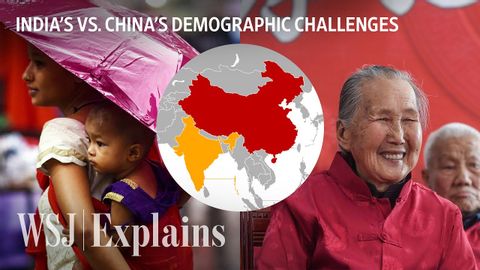印度人口正式超越中國成世界第一!未來的全球經濟將如何發展? (What India’s Population Surpassing China’s Means for Global Economies | WSJ)
 沒有此條件下的單字
沒有此條件下的單字US /ˈstrʌɡəl/
・
UK /'strʌɡl/
- v.t./i.奮鬥;掙扎;打鬥;搏鬥
- n. (c./u.)掙扎;掙扎;奮鬥;難題
US /ˈslaɪtli/
・
UK /ˈslaɪtli/
US /prəˈfaʊnd, pro-/
・
UK /prə'faʊnd/
